Ceramics blog
How do you add gold to pottery
This is a question I got almost every week so here we go, everything you want to know and more on how to add gold to pottery.
First, your pieces need to be glaze fired, which means they are finished – for more about that, you can read the article listing the stages of clay. You will add gold preferably to a glazed piece, gold luster will take the texture of what’s beneath. On a shiny background, it will be shiny. On a matte surface, it will go matte, and way duller.
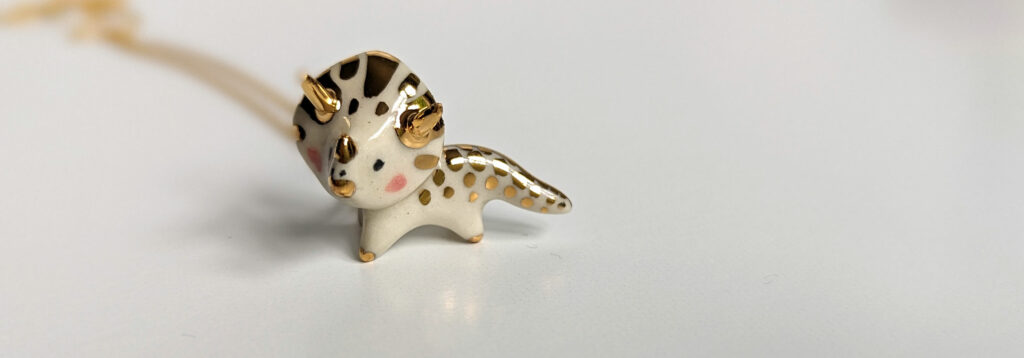
Gold and other luster types
There are several types of luster – also called overglazes – so let’s review them first. I use mainly three lusters and then there are others. I use, in preference order : yellow gold, white gold and mother of pearl. You’ll also find copper on the market, as well as various colors like purple, orange or blue which I’ve not tried yet.
Overglaze also exists as decals, pretty nice when you want to add patterns or illustration to your pottery.
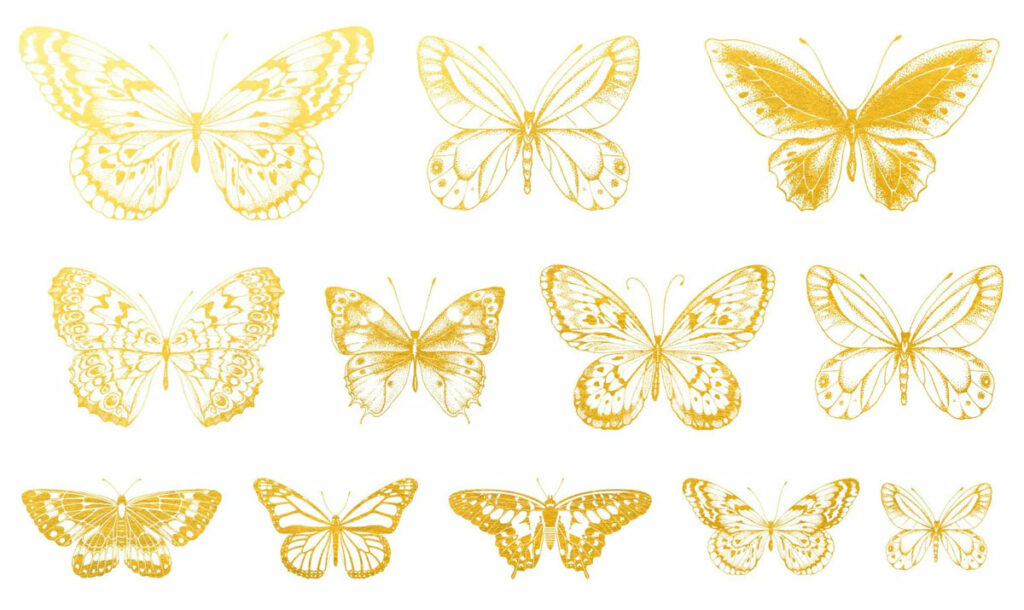
Materials, tools and equipment
The yellow and white gold as well as the mother of pearl are presented in liquid form, often in very small containers (5-15 ml). Liquid lusters are tainted, premium gold is red, regular gold is brown, white gold is green and mother of pearl is blue.
Adjacent products that you will need are paint thinner or essence from the same luster brand (usually Mayco). You will also need dedicated thin brushes that you will preferably use for 1 product only.
You’ll need paper and personal protective equipment, a respirator (3M 6000 is a good pick) and glasses are great, as well as nitrile gloves. The fumes from the lusters can give you a headache so it’s best not to breathe them in. The manufacturer specifies that fumes are non toxic but the odors can be uncomfortable, either during application or firing.
Spoiler alert : These products are expensive.
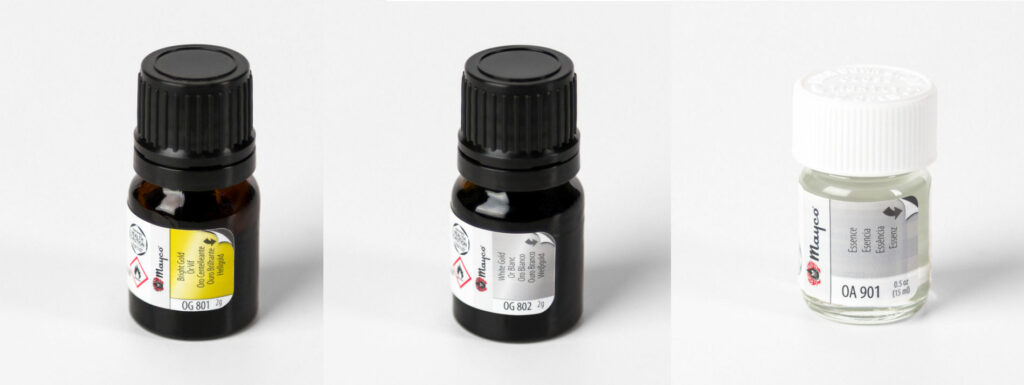
Luster application
Lusters have a distinctive colorant so that you can see your application clearly. Applying lusters on very dark glazes however will prove a challenge so prep accordingly (a strong desktop light is useful).
You can apply lusters with a thin paintbrush, you should paint an even thin coat and avoid pooling. Lusters are workable while wet but once they’ve dried, corrections aren’t easy and will probably not look as good. I usually swipe everything off and redo my design if I made a mistake or smudged it accidentally.
A luster pen is available, it will make tiny consistent lines. It’s a nice tool for lettering or very fine details. I tend to like the brush flow better so I don’t use it much.
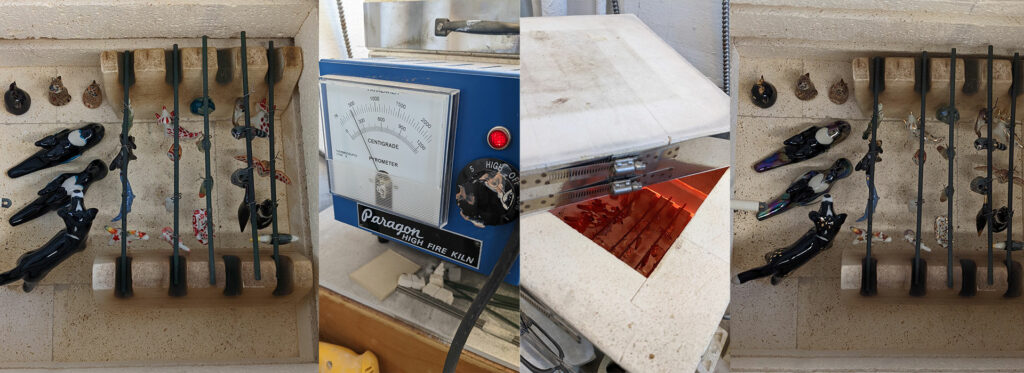
Lusters drying time
Lusters, or overglazes, can be fired wet. It’s not advised though because transporting your pieces to the kiln while wet increases the risk of smudging your delicate work.
The drying time is pretty short though, I usually don’t wait more than an hour for everything to be dry and movable. When doing a 10-15 jewelry batch, by the time I’m done overglazing the last pendant, the first pieces are usually dry. I start with the most complex piece and keep the simplest last, that way I don’t have to wait for drying and can start firing right away.
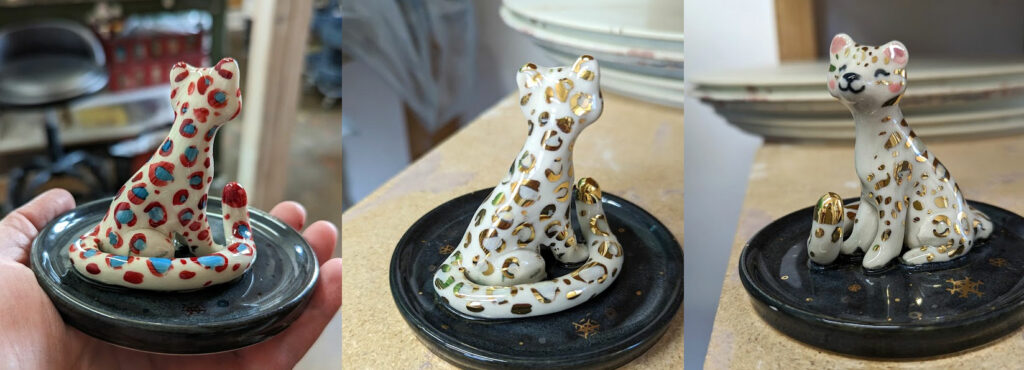
Firing Overglazes
Firing lusters is pretty straightforward. Firing will burn off the colorant and reveal the metallic shine, allowing the gold, pearl or copper to adhere to your piece permanently.
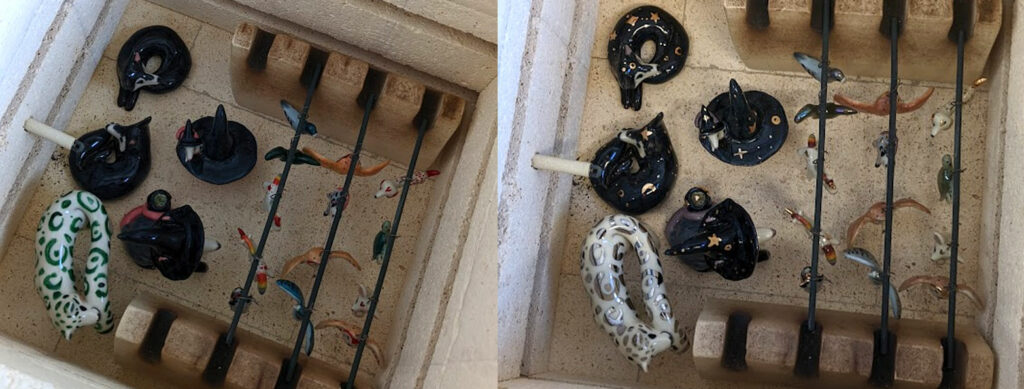
I got a used my mini test kiln for this purpose only. It’s a manual kiln that I’ve grown accustomed to using which means it will not stop automatically. I usually set it to high and set a 30-40 minutes timer depending on the load. It will reach a 660°C temperature, which is a cone 020 and then it’s switched off and allowed to cool down naturally.
This kind of flash firing is not for everyone nor every body of work. For smaller works I find it makes no difference. Anecdotally, certain glazes will react to this, Amaco’s Emerald Falls for exemple gets a darker patterned shade that’s very nice. I’m now third firing this glaze even without luster just for the looks of it.
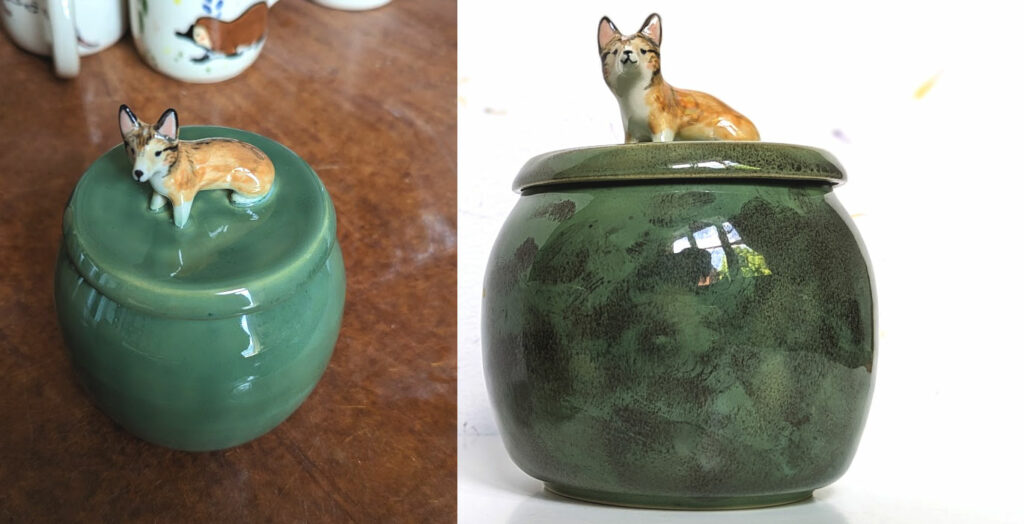
Caring for Gold Lustered pieces and troubleshooting
If fired correctly, Overglazes are very sturdy. If you find your overglaze disappearing while a piece is rubbed or scratched with a fingernail for example, it hasn’t been fired properly. The good news is you can redo it easily 🙂
When overfired, lusters will go brown or burn off completely. If your piece hasn’t been damaged in the process, you can proceed again.
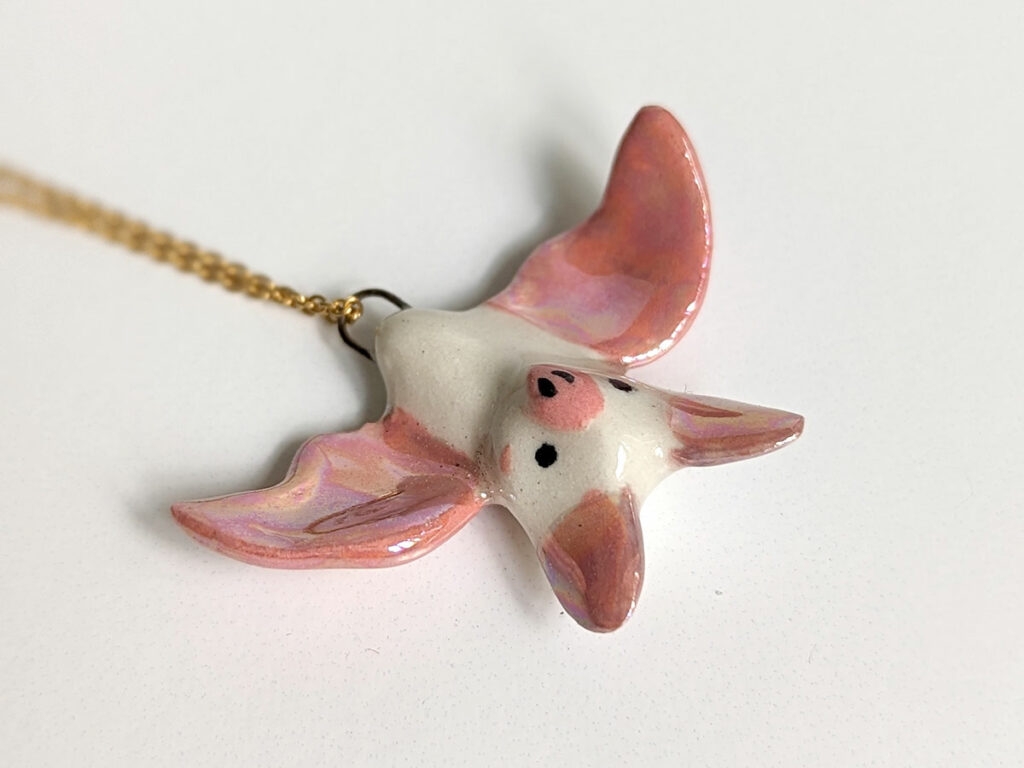
Gold luster is real gold, so it will not do well in a microwave and might dull overtime if washed in a dishwasher regularly. On jewelry though, it will stay on and resist the mild soap of a daily shower for example. I’d advise against swimming pools or spa chemicals contact with gold, I don’t know how it would react but I wouldn’t try it.
If you’d like to know more about caring for ceramics, here’s how to care for your handmade pottery.
That’s about all I had to tell you about gold luster or overglazes !
If you enjoyed this blog article, you can follow and support me on ko-fi, share it and link it from your website. Thanks !

